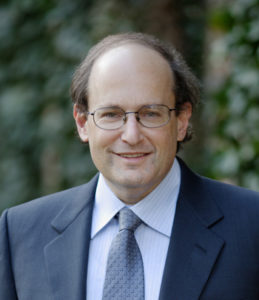In 2001, Steinhardt and collaborators proposed that the big bang might instead be a big bounce, and that the key events shaping the large-scale smoothness, flatness and density variations of the universe may have occurred before the bounce. The next year, Steinhardt and Neil Turok (Perimeter Institute) further developed the idea by proposing that the bounce may recur at regular intervals every trillion years or so, resulting in a “cyclic model” of the universe, which has now become the leading rival to the inflationary picture. In recent versions developed with Anna Ijjas, the bounces occur when the universe contracts to a finite size large enough that quantum gravity effects can be ignored. This development has several important advantages including avoiding the cosmic singularity, initial conditions, multiverse, and entropy problems of big bang/inflationary cosmology. Major advances are currently being pursued by the Simons Foundation program on Cosmological Bounces and Bouncing Cosmologies, which they co-founded.
In condensed matter physics, Steinhardt and Dov Levine (Technion) first introduced the concept of quasicrystals in 1983, a new phase of solid matter with symmetries that are forbidden for periodic crystals (such as five-fold symmetry in two dimensions or icosahedral symmetry in three dimensions). Throughout the more than three decades following that theoretical breakthrough, Steinhardt has continued to make contributions to understanding quasicrystals’ unique mathematical and physical properties.
Motivated by these ideas, he conducted a decade-long international search for a natural quasicrystal that culminated in the discovery of the first example (now called icosahedrite) in a sample found in the mineralogical collection of the Museo di Storia Naturale in Florence, Italy and purported to have come from a remote region of the Kamchatka Peninsula. Steinhardt then organized and led an international geological expedition to Kamchatka in 2011 to prove the origin and find new samples. The expedition succeeded in unearthing new samples of icosahedrite and showing that it traced its origin to a 4.5 billion year old meteorite that was previously unknown. From the evidence provided by Steinhardt’s team, the Meteoritical Society acknowledged the meteorite and the proposed name, Khatyrka (derived from the name of a river near the impact site). Steinhardt and his team later discovered a second natural quasicrystal, decagonite, in the Khatyrka samples. Also found was a crystalline phase consisting of an alloy mixture of aluminum, iron and nickel, which the International Mineralogical Association officially named steinhardtite in his honor.
One of the most significant consequences of Steinhardt’s work on quasicrystals has been the development of new types of photonics solids for efficiently trapping and manipulating light. Steinhardt worked with Weining Man (SFSU) and Paul Chaikin (NYU) to construct the first three-dimensional icosahedral photonic quasicrystal; and, with Salvatore Torquato (Princeton), and Marian Florescu (University of Surrey) he has invented new types of photonic solids called hyperuniform disordered solids (HUDS), that have a complete photonic band gap despite the fact they are isotropic and disordered.
Steinhardt is a Fellow in the American Physical Society and a member of the National Academy of Sciences. He shared the P.A.M. Dirac Medal from the International Centre for Theoretical Physics in 2002 for his role as one of the three leading architects of the inflationary model of the universe; the Oliver E. Buckley Prize of the American Physical Society in 2010 for his contribution to the theory of quasicrystals; and the John Scott Award in 2012 for his work on quasicrystals, including the discovery of the first natural quasicrystal. He was been a Sloan Fellow (1982-6) and Guggenheim Fellow (1994-5). In 2012, he was named Simons Fellow in Theoretical Physics; Radcliffe Institute Fellow at Harvard; and Moore Fellow at Caltech. In 2014, he was named a Caltech Distinguished Alumnus. In 2018, he and Italian geologist Luca Bindi shared the Aspen Italia Prize for their discovery of the first natural quasicrystals. In 2020, he was awarded the Niels Bohr Institute Medal of Honor for his contributions to science and the Carl Friedrich von Siemens Research Award from the Alexander von Humboldt Foundation.
Professor Steinhardt is the author of over 200 refereed articles, 100 reviews, sixteen patents, three patents pending, three technical books, and numerous popular articles. His is the author of The Second Kind of Impossible: The Extraordinary Quest for a New Form of Matter , (2019), a popular account of the remarkable decades-long story of quasicrystals — from how the concept was first invented to the wild expedition that discovered natural quasicrystals in a remote stream in Kamchatka to the ongoing work to understand their implications for the evolution of our solar system. He is also co-author (with Neil Turok) of Endless Universe: Beyond the Big Bang (2007), a popular book on contemporary theories of cosmology.


